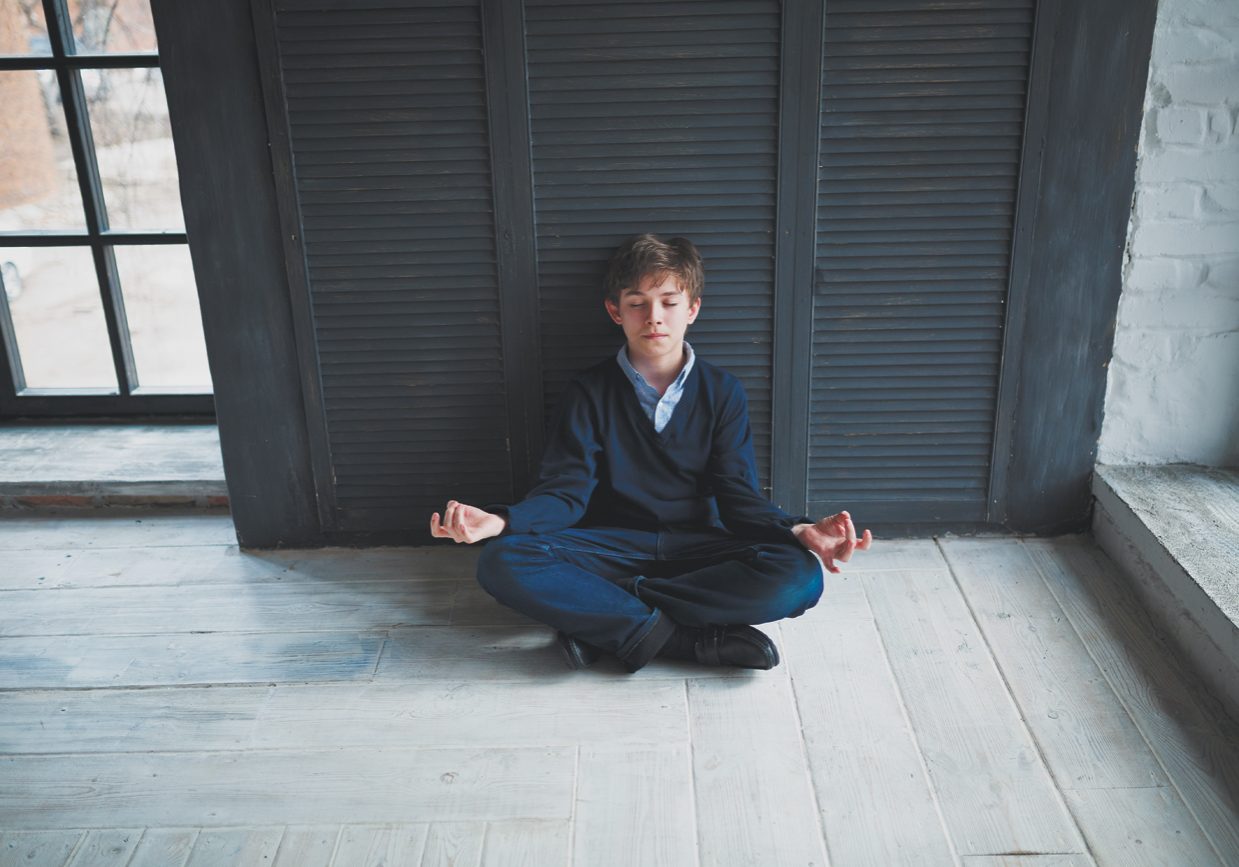
Yoga therapy for children
Dr Lucy Arnsby-Wilson explores yoga therapy for children and teenagers who experience challenges
With soaring mental health rates, it is surely time for a new vision for our children. Every year, more young people are thought to experience some sort of mental health problem. Indeed, the majority of adults that have mental health problems, first experienced symptoms in late adolescence.
Yoga therapy can be one of the most effective and powerful modalities for healing. This can be illustrated in the case of Kasha, a 14-year-old girl living in an inner-city home with her younger sister (aged 9) and her mother.
Kasha was uncertain about the whereabouts of her father and her mother worked nights, often leaving Kasha responsible for her sibling and herself. Kasha had initially attended a yoga therapy group that I had established in a community setting and had been referred by the family social worker. When I first met her, Kasha was incredibly withdrawn. She was very slight in build and wearing clothes, all black, several sizes too big for her. One day she removed her hoodie in a session to reveal vertical and horizontal scaring up both her arms. Her social worker informed me that Kasha had tried to take several overdoses in the past and had revealed often having suicidal thoughts.
Kasha was a worry and her attendance at the group was erratic. It was clear that whilst wanting to attend, it was difficult to do so. I asked her about this and she told me that if she wasn’t home at a certain time, her sister would have to feed herself and her mum would get mad. With Kasha’s consent, I spoke to the social worker who assured me she would support Kasha with her home situation. So I made arrangements to see Kasha at her school where she had poor attendance.
First session
On our first session, Kasha told me: “I’m not doing yoga. My social worker said that you do that, but it’s not for me.” I asked her what she thought she thought yoga was. She told me: “You have to be fit to do yoga; it’s not my scene.” We spoke about the Yoga Sutras, where I shared that Pantanjali offers only two lines on this part of the practice (asana) but presents many practices to train the mind. She was interested in this.
Kasha said she had always been under pressure at home. She explained that she often didn’t sleep at night, either because she had jobs to fulfil or because she was worried about fulfilling what she felt responsible for. She loved biology at school and we built on her knowledge and understanding to grow a greater awareness of what might be happening in her body and physiology from a neuroscience perspective. Again, this interested her; she felt empowered that she had the capacity to heal.
Alongside her social worker who helped to change the practical circumstances of the family, Kasha and I developed a series of yoga nidras; the aim was to invite her back to a sense of being more than enough, just as she was. Kasha enjoyed the felt sense of being tucked up in a blanket and soothed by my voice to drift into a place of deep rest. We recorded the practices and she told me that she played them to her sister and they both began to use them to go to bed at night. “It helps me to feel at peace,” she said.
When Kasha spoke, she would often hold her breath or speak with a sharp inhale. It was clear that she was unaware of the holding she was engag ed in. As our relationship developed, and she felt safer, we began to explore this and what it may signify. When our breath is flowing freely we can feel it not only in the belly but the lungs, diaphragm, the chest, the ribs. We spoke about coherent breathing (the practice of breathing at six breaths per minute) as a way to work towards more homeostasis in the body. As Kasha tried this, she called out: “When I breathe, I stick my chest out.” This was an invitation to bring Kasha’s awareness to the body as a route to healing.
Ongoing work
Kasha and I continued to work together for the next year until she moved away with her sister to live with their aunt in a different city, as their mother was unwell and unable to support them. By the time she left, Kasha had not self-harmed for over seven months and reported feeling “safe and confident in the body”. Kasha began to dance and write as a way to express herself. Her situation was still incredibly difficult, but she did tell me on our final session that she had a choice of how to relate to this. “I used to think what happened in my life was my fault. That I was responsible. However, I know now, I did the best I could. I was a child. I wanted to die to get out of it all, I wanted my body to disappear, but now I see my body as being like a friend to show me what I need to know.”
As a clinical psychol ogist and yoga therapist, over the past 20 years, I have seen more and more psychologists turning to yoga therapy. Stories such as Kasha and the statistics show us that childhood mental health is multi-dimensional. As Desikachar, one of the fathers of yoga therapy, states: “Yoga therapy can not only be preventative or curative, but also serve a means to manage illness, or facilitate healing in the person at all levels.”
Lucy Arnsby-Wilson is a mother of three, a clinical psychologist and yoga therapist. She is the co-founder and director of the UK’s first Children and Young People’s Yoga Therapy Training Course along with Janine Hurley at Creative Calm (creative-calm.com/kids-yoga-therapy-tt.html)




